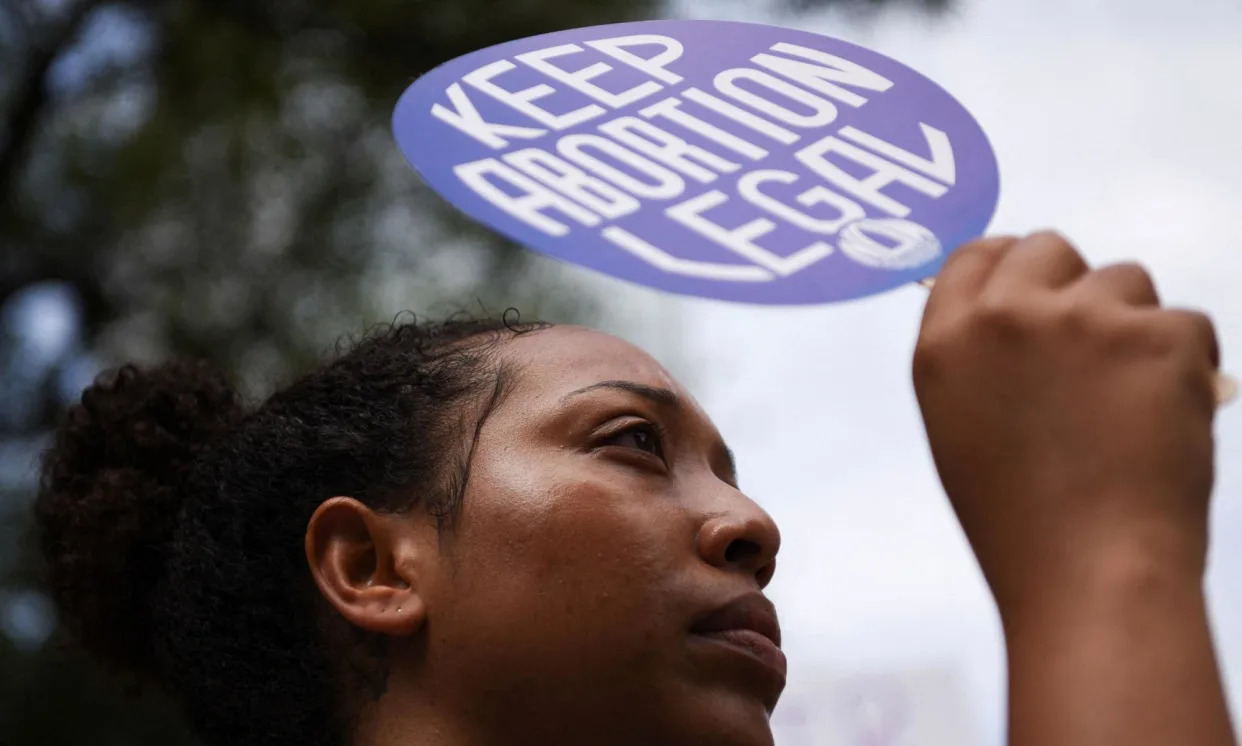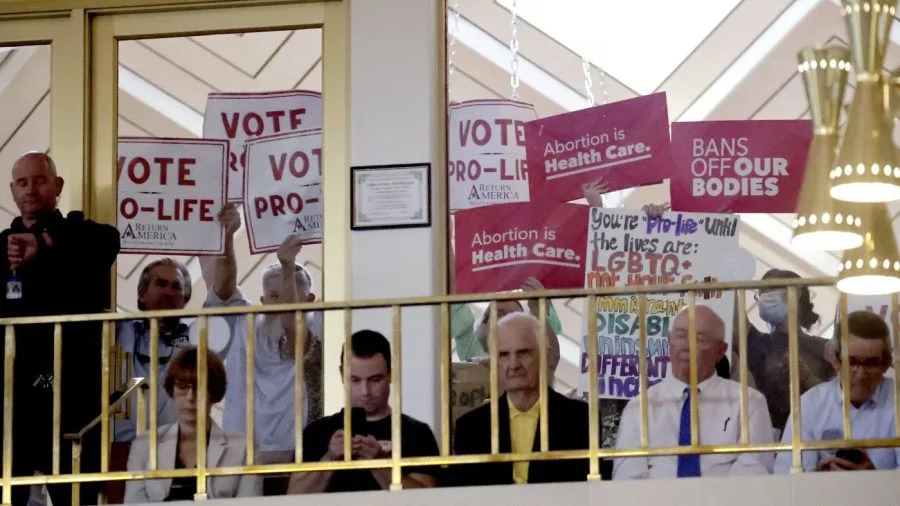Nicole Karlis
Wed, May 15, 2024

Package with boxes of Mifepristone Photo illustration by Salon/Getty Images
Since the U.S. Supreme Court overturned Roe v. Wade nearly two years ago, eliminating the constitutional right to access abortion, 14 states have nearly totally banned abortions. The implications have varied from forcing women to carry unwanted or unviable pregnancies to term to women being forced to spend thousands of dollars to travel out of state to influencing where medical students attend their residency programs.
But one thing the restrictive landscape hasn’t done? Reduce the number of abortions happening nationwide.
According to a new report released this week by the Society of Family Planning's WeCount project, the number of abortions in the U.S. has continued to rise slightly since Roe was overturned. In 2023, there were on average 86,000 abortions per month compared to 2022 when there were about 82,000 abortions per month.
While the researchers don’t have their own data from pre-Dobbs, a previous study estimated that in 2020 slightly more than 930,000 abortions occurred in the United States in 2020, averaging about 77,500 per month. The same study estimated that abortion numbers had increased between 2017 and 2020 after decades of the annual number of abortions declining.
WeCount collected their data thanks to their database of all clinics, private medical offices, hospitals and virtual clinic-abortion providers in the United States. Leveraging this database, providers submit the monthly number of abortions. WeCount synthesizes the data and creates imputations for the clinics that don't send their data.
“We're finding that there were a slightly higher number of abortions in 2023 compared to the data we collected in 2022,” Ushma Upadhyay, a professor and public health scientist at the University of California, San Francisco who co-led the research, told Salon in a phone interview. “We’re also able to look at the loss in states with either total abortion bans or six-week bans, and we found that there are about 180,000 fewer abortions in the 18 months since the Dobbs decision in those states.”
These cumulative declines were most notable in Texas, Georgia, Tennessee, Louisiana and Alabama. Notably, the data found that accessing abortion care via telehealth has been a “game changer,” Upadhyay emphasized.
In a telehealth medication abortion, a patient typically talks to a provider over video or a secured chat platform. If the patient is less than 10 weeks pregnant and found to be eligible, the provider can prescribe the patient mifepristone, which blocks pregnancy hormones, and then misoprostol, which causes uterine contractions. The medicines can be delivered via a mail-order pharmacy even to those in states where abortions are nearly completely banned.
According to the report, more than 40,000 people in states with abortion bans and telehealth restrictions received medication abortion through providers in states protected by shield laws between July and December 2023.
Want more health and science stories in your inbox? Subscribe to Salon's weekly newsletter Lab Notes.
“Telehealth has really opened up access for people living in ban states who previously didn't have many other options,” Upadhyay said. “This is an option that their state may not see as legal, but the states providing the care see these as a fully legal option.”
Telehealth can help patients from having to travel many hours to access care, take time off or find childcare — and it’s also less expensive than in-person care.
“This care often does not even require an appointment. Some providers offer it in an asynchronous way, meaning that when the patient comes to the website, completes their medical history information and then any questions, a provider will review it,” Upadhyay said. “Patients that are able to do the entire process from the comfort of their home or even at their work. They don't actually have to take time off of work to communicate with their providers.”
Elisa Wells, co-founder and co-director of Plan C, a non-profit abortion access group, told Salon in a phone interview that she wasn’t surprised to see the increase in abortion numbers in the #WeCount report.
“Abortion is a common health need and as there is more information about abortion and abortion access available through the press — and in part because of these bans — I think people are considering how abortion fits into their lives and utilizing the service that they know is right for them," Wells told Salon. “So we're not at all surprised, and we also know that the WeCount numbers are an undercount because they do not account for the self-managed abortion option.”
At the same time, this is happening as anti-abortion legislators are targeting medication abortion and trying to restrict access. In Louisiana, a bill proposed by a Republican state senator would classify mifepristone and misoprostol as Schedule IV "controlled dangerous substances," essentially lumping it in the same category as sedatives like Xanax and Ambien. Meanwhile, the country is still waiting for the U.S. Supreme Court to make a decision on a case that would restrict access to mifepristone nationwide, and eliminate access to mifepristone by telehealth and by mail.
In other words — and in spite of the fact that self-managed abortions are safer than ever — the future of abortion access is not guaranteed. Even if telehealth access is not eroded, Upadhyay emphasized this data shouldn’t be interpreted as “all of the demand in states with abortion bans” is being met.
“Our biggest concern is that it will be overlooked that there are many, thousands of people living in states with bans who are unable to access abortion that are being forced to carry their unwanted pregnancies to term,” she said. “It's so important that people have healthcare in the communities where they live.”
US support for abortion rights up four points to 60% since fall of Roe v Wade
Carter Sherman
Tue, May 14, 2024

An abortion rights protester in Houston.Photograph: Callaghan O’Hare/Reuters
In the two years after the US supreme court overturned Roe v Wade, leading to abortion bans across many parts of the south and midwest, abortion rights have only grown more popular, new polling from Pew research Center has found.
A majority of Americans has long supported abortion rights. But more than 60% of Americans now believe abortion should be legal in all or most cases – a four percentage-point jump from 2021, the year before Roe fell.
This support transcends numerous demographic divides in US society: most men, women, white people, Black people, Hispanic people and Asian people believe abortion should be legal in all or most cases. It extends to majorities of all age groups and education levels, although 18-to-29-year-olds and people with more education are more likely than other cohorts to believe abortion should be legal in all or most cases.Interactive
People who live under abortion bans have also become increasingly supportive of abortion access since the overturning of Roe in June 2022. In August 2019, only 30% of people who live in states where abortion is now outlawed said they believed it should be easier to access abortion. Today, 42% of people in the same states say that.
The broad support for abortion may prove pivotal in the upcoming US elections – Joe Biden’s re-election campaign has zeroed in on abortion as a winning issue as the president continues to trail Donald Trump in polls. Battleground states such as Arizona and Nevada are expected to hold ballot measures to protect abortion rights, which Democrats hope will boost both voter turnout and their own chances.
Democrats are far more likely than Republicans to support abortion rights, with 85% of Democrats and Democratic-leaning voters believing that abortion should be legal in all or most circumstances. By contrast, 41% of Republican or Republican-leaning voters said the same.
GOP opposition to abortion is largely fueled by conservative Republicans, since more than 70% who identify as such think abortion should be illegal in all or most circumstances. More than two-thirds of moderate and liberal Republicans support abortion rights, Pew found.
Among the groups measured by Pew, conservative Republicans and white evangelical Protestants were the only groups with majorities that opposed abortion access. Nearly three-quarters of white evangelical Protestants think abortion should be illegal in all or most circumstances.Interactive
Some people’s views of abortion did grow more complex the deeper Pew inquired. Most groups that support abortion rights ultimately thought abortion should be legal in “most” circumstances, rather than “all”. In other polling on abortion, support for the procedure tends to dwindle when people are asked whether they would back abortions in the second or third trimester of pregnancy.
More strikingly, Pew also asked Americans to evaluate how much they agreed with certain statements about abortion. More than half of Americans agreed with the statement that “the decision about whether to have an abortion should belong solely to the pregnant woman”, while only 35% of Americans say they agreed that “human life begins at conception, so an embryo is a person with rights” – a stance that would logically lead them to oppose abortion.
Yet a third of Americans said that both statements describe their views to some extent, even though those statements clash.
Survey finds telehealth is driving increase in abortions, despite state bans
Nathaniel Weixel
Tue, May 14, 2024

In the 18 months since Roe v. Wade was overturned, the number of abortions in the United States has continued to grow, according to new data, even as 14 states have banned abortion completely.
Tuesday’s report from the Society for Family Planning’s WeCount project found much of that growth was likely related to telemedicine, which accounted for 19 percent of all abortions nationwide by December.
The report was also the first to fully capture the impact of providers who use blue state shield laws to offer telehealth abortions.
Shield laws give some legal protections to clinicians who offer abortion care via telehealth to people who live in states that have total abortion bans or severe restrictions. In 2023, five states had shield laws in effect — Colorado, Massachusetts, New York, Vermont and Washington.
Since the WeCount data was collected, Maine and California have also passed shield laws protecting providers who offer care nationwide.
Nearly 8,000 people per month in states with bans or severe restrictions were getting medication abortion from clinicians operating under shield law protections from October through December 2023, making up nearly half of all telehealth abortions counted in the report.
“Access to medication abortion through telehealth continues to play an ever-increasing role in abortion care nationwide — even as the Supreme Court weighs the fate of telehealth abortion care,” said Ushma Upadhyay, a professor at the University of California, San Francisco’s Advancing New Standards in Reproductive Health and co-chair of WeCount.
By the end of 2023, providers in states with shield laws were prescribing abortion pills to an average of 5,800 people a month in states with total abortion bans or six-week abortion bans.
Shield law providers also prescribed abortion medication to about 2,000 women per month in states where the local laws limit abortion pill prescriptions by telemedicine.
According to the report, there were an average of 86,000 abortions per month in 2023 compared to 2022, where there were about 82,000 abortions per month, excluding abortion provided through shield law telemedicine.
In the 15 states with total or six-week abortion bans, the report estimated that more than 180,000 abortions would have likely been obtained through clinic providers had abortion not been banned. The states with the greatest cumulative declines in abortion volume over 18 months include Texas, Georgia, Tennessee, Louisiana and Alabama.
“Even as the total national number of abortions nationally has increased, we can’t lose sight of the fact that access to in-person abortion care has virtually disappeared in states where abortion is banned,” said Alison Norris, a professor at the Ohio State University’s College of Public Health and a WeCount co-chair. “The loss of clinic-based care — which makes up more than 80% of abortion care — is a devastating loss to access for people across wide swaths of the country.”
The states with the largest cumulative surges in abortions over the 18 months following Dobbs included Illinois, Florida and California.
Florida enacted a six-week abortion ban on May 1, so the impact of that new law isn’t measured in the report. But it’s likely to have far-reaching impacts, given the relatively high number of abortions in that state and the total abortion bans in Texas, Oklahoma, Arkansas, Louisiana, Mississippi, Alabama, and Tennessee.
While most of the surge states bordered states with abortion bans, there are also large increases in states that are geographically distant from states with abortion bans, including California, New Jersey, New York, and Massachusetts.
The report noted the increased numbers are likely due to people traveling from states where they cannot access care, as well as increased abortions among residents within these states.
Updated at 12:26 p.m. EDT
No comments:
Post a Comment